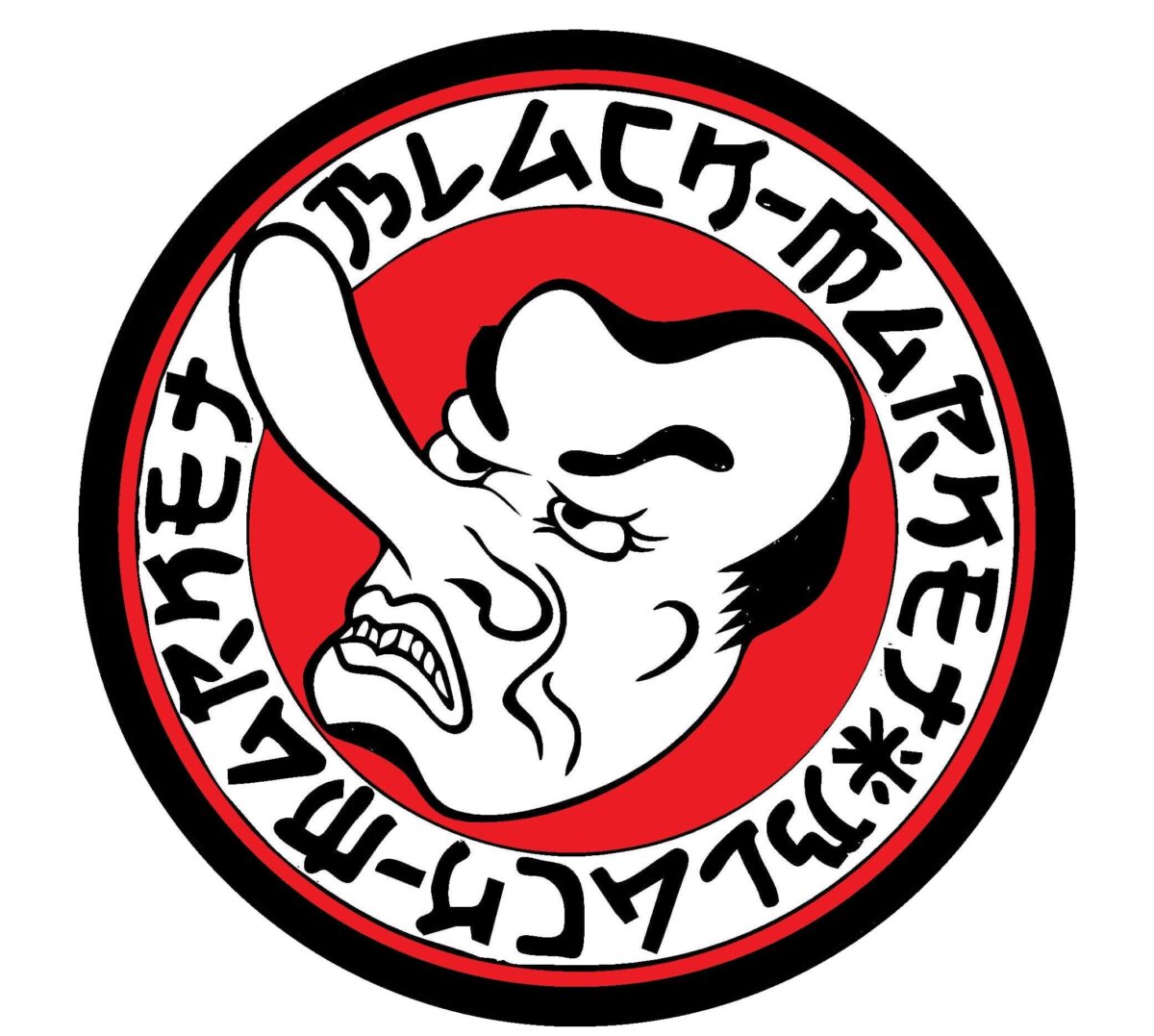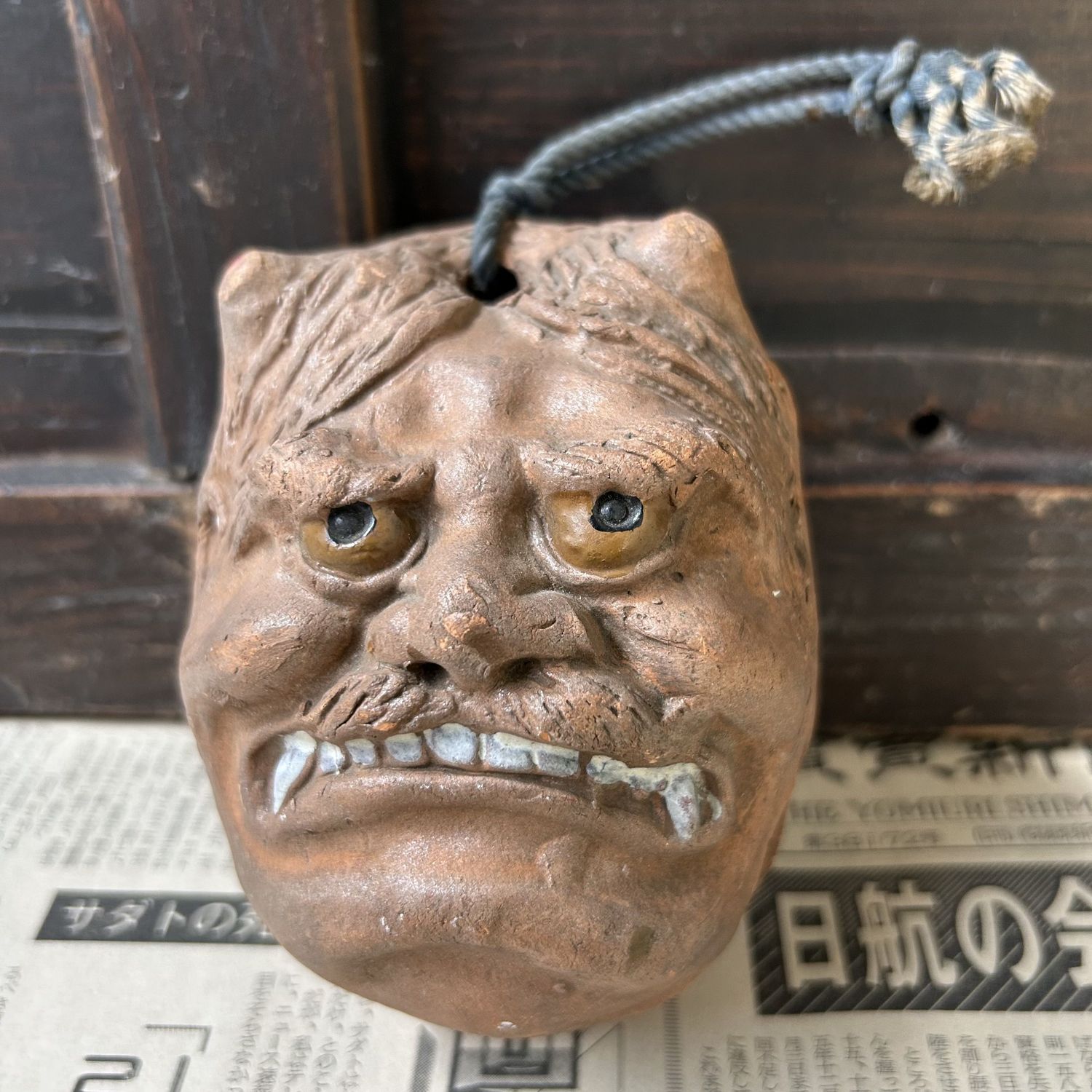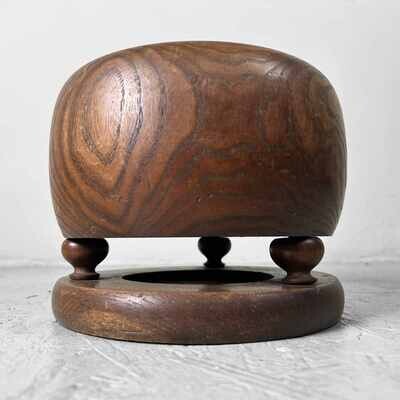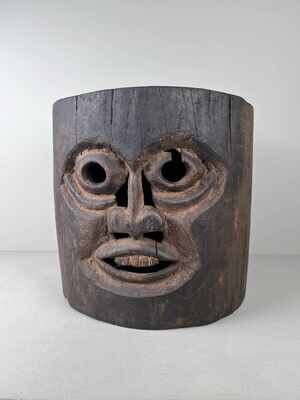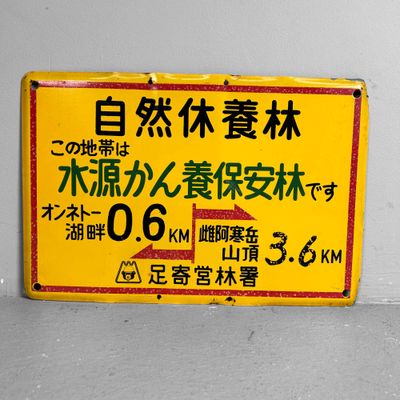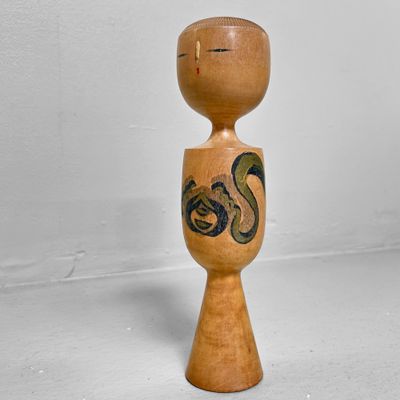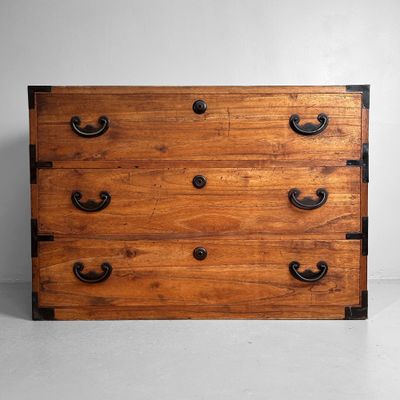Antique Japanese Oni Dorei Bell with Dual Faces, 1920s.
Antique Japanese dorei (土鈴) clay bell from the Taishō period (1912–1926), handcrafted from kiln-fired clay into a striking bell featuring two expressive faces.
Dimensions: Height 11 cm, width 10 cm, depth 9.5 cm.
The two faces are intricately sculpted, each with a fierce, slightly menacing expression reminiscent of mythological beings such as oni (demons) or protective figures from Japanese folklore. Such symbols often represented strength and were believed to ward off misfortune.
The bell is made of unglazed, traditionally fired clay, with subtle color accents—including a deep burgundy band adorning one of the figures' heads. At the base, a vertical slit contains a loose clay pellet that produces a soft, rhythmic sound when moved.
This dorei (土鈴), a traditional Japanese clay bell, served as an amulet, good-luck charm, or ritual object.
In Japan, dorei were often hung in homes or near shrines for protection and to dispel negative energies through their sound. The gentle chime of the bell symbolized purity and was thought to attract harmony. The dual faces may represent vigilance in multiple directions, a duality in function (e.g., both repelling and safeguarding), or a deeper spiritual meaning.
A stamped seal is visible on the side of the bell, likely indicating the maker or workshop.
This piece is a remarkable example of early 20th-century Japanese folk craftsmanship, carrying strong ritual and symbolic significance.
With its unique combination of artistry, materials, and cultural symbolism, this bell is a fascinating object for collectors of Japanese antiques or enthusiasts of East Asian spiritual artifacts.
